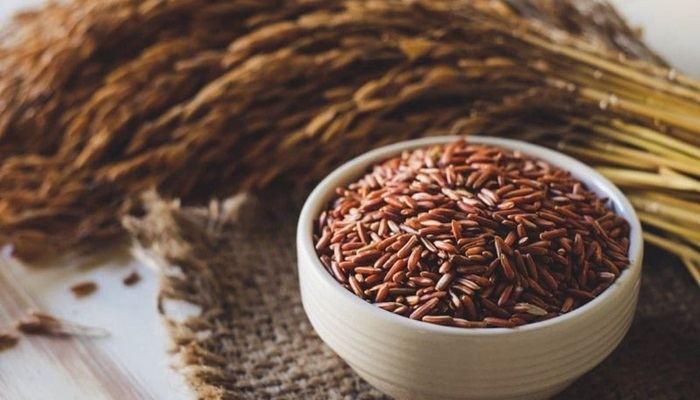Diabetes management is closely tied to dietary choices, especially when it comes to carbohydrates. For individuals with diabetes, selecting the right type of grains can be a challenge. Today, we delve into whether brown rice can be a healthy and enjoyable option for diabetics, providing detailed insights into its benefits, preparation, and cultural significance.
Understanding the Role of Grains in a Diabetic Diet
A Reflection on Tradition
In many cultures, traditional diets emphasize whole grains that promote health and longevity. These diets often include an abundance of grains known for their nutritional value. This tradition underscores the importance of choosing foods that support overall well-being while managing diabetes.
Symbol of Comfort and Nourishment
Brown rice has gained popularity as a healthier alternative to white rice. It symbolizes comfort and nourishment, offering a versatile ingredient in both savory and sweet dishes. Its cultural significance lies in its ability to provide a quick, convenient texture that enhances meals without requiring extensive preparation.
Exploring Brown Rice as a Diabetic-Friendly Option
Nutritional Considerations of Brown Rice
Brown rice offers several benefits for those managing diabetes:
High Fiber Content: Rich in fiber, which helps slow down the absorption of sugar.
Lower Glycemic Index: Has a lower glycemic index compared to white rice, leading to less rapid spikes in blood sugar.
Nutrient-Dense: Contains essential vitamins and minerals like magnesium and selenium.
However, brown rice also comes with some considerations:
Carbohydrate Content: Still contains carbohydrates, so portion control is essential.
Cooking Time: Takes longer to cook than white rice, but this can be managed with proper planning.
To make brown rice more diabetic-friendly, focus on using healthier cooking methods and controlling portions.
Preparing Your Kitchen
To prepare brown rice suitable for diabetics, consider using ingredients that enhance its nutritional profile and flavor:
Healthy Fats: Incorporate healthy fats like olive oil or avocado oil instead of butter.
Herbs and Spices: Add herbs like rosemary, thyme, or garlic powder for flavor without sugar.
Vegetables: Include vegetables like carrots, peas, or broccoli for added nutrients and color.
Prepping Ahead
Before starting, prepare all ingredients. Rinse the rice thoroughly, measure out water or broth, and have any additional ingredients ready. Having everything prepared ensures a smooth cooking process.
Step-by-Step Guide to Cooking Diabetic-Friendly Brown Rice
Detailed Cooking Process
Ingredients:
Brown Rice: 1 cup (uncooked).
Water or Broth: 2 cups (use low-sodium broth for extra flavor).
Olive Oil or Avocado Oil: 1 tablespoon.
Salt: 1/4 teaspoon (optional).
Garlic Powder or Fresh Garlic: 1 clove (optional).
Steps:
Rinse Rice: Rinse the brown rice under cold water until the water runs clear.
Combine Ingredients: In a medium saucepan, combine the rinsed rice, water or broth, oil, salt, and garlic.
Bring to Boil: Bring the mixture to a boil over high heat.
Reduce Heat: Once boiling, reduce the heat to low, cover the saucepan with a tight-fitting lid.
Simmer: Let the rice simmer for about 40 minutes or until the liquid is absorbed and the rice is tender.
Rest and Fluff: Remove from heat and let the rice sit covered for 10 minutes. Fluff with a fork before serving.
Enhancing the Experience
Pairing with Other Nutrients
Proteins: Serve brown rice with grilled chicken, baked fish, or black beans for added protein.
Vegetables: Pair with fresh vegetables like sliced tomatoes, cucumbers, or a side salad for a balanced meal.
Dips and Sauces: Offer with low-sugar dips like hummus or guacamole for extra flavor.
Drinks Pairing
Choose drinks that complement the flavors of brown rice. Herbal teas like chamomile or peppermint can help soothe the palate. Unsweetened almond milk or water also offer hydration without spiking blood sugar.
Cultural Significance
A Taste of Tradition
Brown rice holds a special place in many cultures, particularly in regions where rice is a staple crop. It is often used in traditional dishes like Japanese sushi or Indian biryani. The tradition of preparing brown rice brings families together, creating lasting memories.
Symbol of Convenience and Celebration
In modern society, brown rice symbolizes convenience and celebration. During busy weekdays or festive gatherings, it is often served as part of communal feasts, fostering a sense of community and gratitude for shared moments.
Historical Context
Rice has a rich history, especially in regions where it was a staple crop. The process of developing brown rice dates back centuries, aimed at improving accessibility and health. This historical context adds depth to the cultural significance of this food.
Regional Variations
Asian Style: Often seasoned with soy sauce, ginger, and sesame seeds for a classic dish.
Latin American Style: Used in dishes like arroz con pollo, often paired with meats and beans.
Global Fusion: Incorporating spices and flavors from around the world, such as Mediterranean-style rice with olives and feta cheese.
Conclusion
In conclusion, diabetics can enjoy brown rice when prepared with diabetic-friendly ingredients. By focusing on healthier cooking methods and controlling portions, you can create a delicious treat that supports blood sugar control. Each step of the process, from selecting ingredients to final touches, contributes to a balanced and flavorful dish that promotes well-being.
Through this guide, you not only learn how to cook brown rice but also gain insight into its cultural significance. So, gather your ingredients, roll up your sleeves, and embark on this culinary adventure. Enjoy the journey of flavors and the joy of sharing healthy meals with loved ones. Happy cooking!
By mastering the art of preparing diabetic-friendly brown rice, you open a door to a world of flavors and traditions. Whether enjoyed as a side dish or part of a balanced meal, this rice offers a taste of history and innovation, inviting everyone to savor the beauty of culinary heritage. Each bite reflects the principles of simplicity, balance, and harmony that define healthy eating, reminding us of the joys of nourishing our bodies and sharing food with others.
Related topics:


